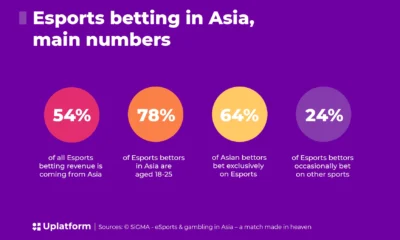In today’s fast-paced world, managing daily utilities is no longer a simple task. Whether it’s electricity, water, internet, or any other essential service, individuals and businesses alike face constant challenges in keeping track of their usage, ensuring that services are billed correctly, and staying informed about potential disruptions. Enter Utilete, an innovative solution that aims to revolutionize the way people manage their utility services.
What is Utilete?
Utilete is a cutting-edge platform designed to simplify and enhance the utility management experience for both consumers and service providers. By integrating various utility services into a single, user-friendly interface, Utilete empowers users to track, control, and optimize their utility usage, providing them with valuable insights to make informed decisions. Whether you are a homeowner looking to monitor your energy consumption or a business owner wanting to streamline your service contracts, Utilete is the one-stop solution for utility management.
Core Features of Utilete
Utilete offers a robust set of features that cater to the needs of individual users, households, and businesses. Let’s explore some of the standout features that make Utilete a game-changer in the utility management space.
1. Centralized Utility Dashboard
One of the key features of Utilete is its centralized dashboard that consolidates all your utility services into one easy-to-use platform. This dashboard allows users to monitor their electricity, water, internet, gas, and other utility services in real-time, all from a single location.
The dashboard provides a detailed breakdown of usage, costs, and trends, helping users track their consumption habits and identify areas where they can cut back to save money. With visual representations such as graphs and pie charts, understanding your utility usage has never been easier.
2. Usage Insights and Analytics
Utilete leverages advanced data analytics to provide users with detailed insights into their utility usage patterns. Through machine learning algorithms, Utilete can predict future usage trends and offer tailored suggestions for reducing consumption.
For instance, if your electricity usage spikes during specific hours, Utilete might suggest switching to energy-efficient appliances or adjusting your heating and cooling settings to reduce energy waste. These proactive suggestions help you stay ahead of potential cost increases and take control of your utility bills.
3. Bill Management and Payment Tracking
Utility bills can sometimes be confusing and difficult to manage, especially when multiple services are involved. Utilete streamlines this process by allowing users to track their bills, make payments, and even set reminders for upcoming due dates. The platform supports integration with various payment gateways, making it convenient for users to pay their bills on time without the hassle of managing separate accounts for each service.
Additionally, Utilete can automatically alert users if there’s an anomaly in billing, such as unexpectedly high charges, enabling users to address billing errors or disputes before they escalate.
4. Alerts and Notifications
Utilete also offers real-time alerts to keep users informed about disruptions, service updates, or unusual spikes in usage. For example, if there’s an issue with your water supply or a scheduled power outage in your area, Utilete will send immediate notifications to ensure you’re not caught off guard.
This feature is especially beneficial for businesses that rely on uninterrupted utility services to operate smoothly. By staying up-to-date with any disruptions, businesses can take immediate action to mitigate potential downtime.
5. Smart Home and IoT Integration
As the Internet of Things (IoT) continues to grow, smart homes are becoming increasingly popular. Utilete integrates with smart home devices to help users automate their utility usage. For instance, if you have a smart thermostat, Utilete can sync with it to help manage your energy consumption more efficiently. Similarly, integration with water-saving devices can help track and reduce water waste, contributing to both environmental sustainability and cost savings.
This seamless integration between utilities and smart technology is one of the primary reasons why Utilete is leading the charge in the future of utility management.
6. Personalized Recommendations for Energy Efficiency
Utilete goes beyond just tracking utility consumption—it provides actionable recommendations for improving energy efficiency. Based on your historical data and usage patterns, Utilete suggests ways to optimize your usage of electricity, gas, and water. For example, it might recommend using energy-efficient lighting, upgrading insulation, or adjusting thermostats based on the time of day.
These personalized tips not only help users save money but also reduce their overall carbon footprint, making Utilete an essential tool for those looking to live a more sustainable lifestyle.
The Advantages of Using Utilete
The impact of Utilete is far-reaching, affecting both individuals and organizations. Let’s take a closer look at the key benefits of using Utilete for utility management.
1. Cost Savings
Perhaps the most significant advantage of using Utilete is the potential for cost savings. By offering tools to monitor consumption, detect billing anomalies, and provide suggestions for energy conservation, Utilete helps users reduce their utility expenses. Whether it’s optimizing heating and cooling systems or identifying unnecessary water usage, Utilete can significantly lower your monthly utility bills.
2. Sustainability
In an era of increasing environmental awareness, sustainability is a priority for many individuals and businesses. Utilete helps users adopt sustainable practices by offering personalized recommendations for reducing energy and water consumption. By tracking and optimizing utility usage, users can contribute to reducing their carbon footprint, all while saving money.
3. Time Efficiency
Utility management often involves dealing with multiple service providers, tracking bills, and responding to service disruptions. Utilete eliminates the need for managing separate accounts and makes it easy to monitor everything from a single platform. With automated alerts, reminders, and payment tracking, Utilete saves users time and effort, allowing them to focus on more important tasks.
4. Enhanced Control and Transparency
Utilete provides users with greater control and transparency over their utility services. Users can easily access detailed reports on their usage, track changes in costs, and make adjustments as needed. This level of visibility is invaluable in understanding consumption habits and making proactive decisions about managing resources.
5. Business Efficiency
For businesses, Utilete offers a more efficient way to manage multiple utility accounts and services. By consolidating all utility data into one platform, businesses can track their expenses, reduce wastage, and identify areas where improvements can be made. Additionally, Utilete’s ability to predict potential disruptions ensures that businesses can take action to minimize downtime and maintain operations.
The Future of Utility Management
The future of utility management lies in digitization, automation, and smart technology. With its focus on data-driven insights and smart home integration, Utilete is perfectly positioned to be at the forefront of this transformation.
As more devices become interconnected and the demand for sustainable practices increases, platforms like Utilete will continue to evolve, offering new ways to optimize utility usage and contribute to a more sustainable future. Through constant innovation, Utilete is poised to redefine how we think about and manage the essential services that power our homes and businesses.
Conclusion
Utilete is not just another utility management tool—it’s a comprehensive solution that provides users with the insights and control they need to optimize their utility consumption, save money, and contribute to a more sustainable future. With its advanced features, seamless integration with smart home technology, and commitment to cost savings and sustainability, Utilete is leading the charge in transforming the utility management industry. Whether you’re an individual homeowner or a business owner, Utilete is the smart, efficient way to take control of your utilities.

 Blog8 months ago
Blog8 months ago
 Sports9 months ago
Sports9 months ago
 Games9 months ago
Games9 months ago
 Tech9 months ago
Tech9 months ago
 App9 months ago
App9 months ago
 Tech7 months ago
Tech7 months ago
 Entertainment8 months ago
Entertainment8 months ago
 Sports9 months ago
Sports9 months ago



